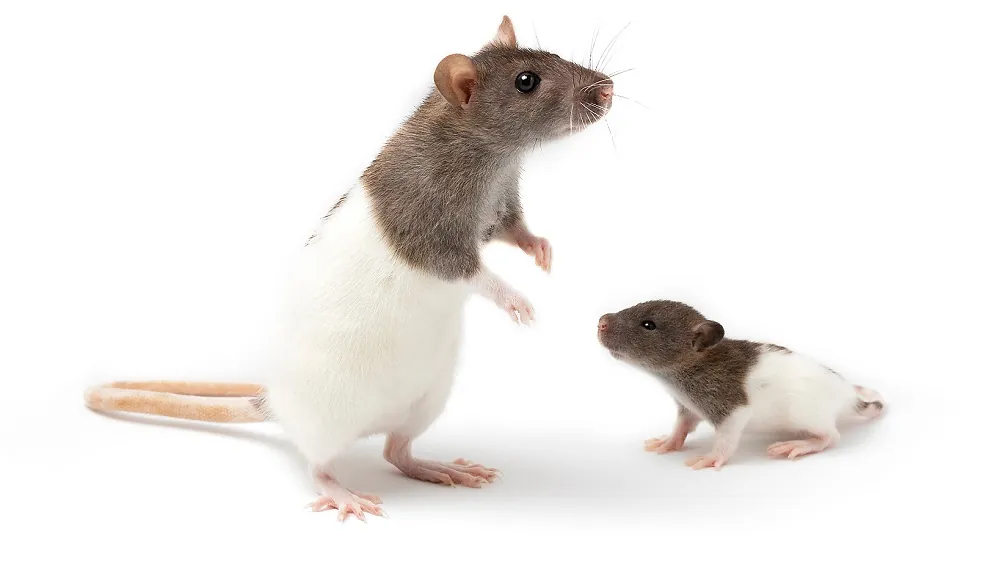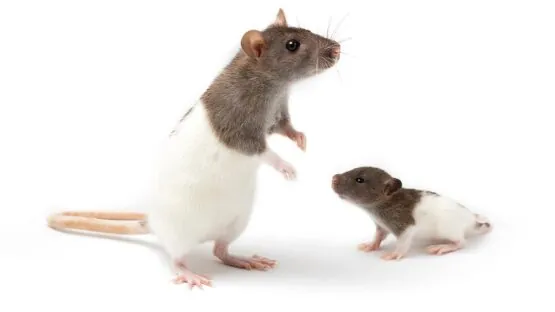In a recent Pharmaceutical Research paper, the researchers explored the molecular processes through which the NAD+ precursors NMN and NR reversed ovarian aging in middle-aged rats [1].
Use it or lose it
Female fertility decreases rather quickly in life. Aging leads to a decrease in the number and quality of oocytes, and fertilization success declines in a woman’s 30s [2]. Therefore, multiple research groups have been aiming to attack the aging ovary problem from many angles.
The researchers of this paper focused specifically on how aging affects mitochondrial fragmentation (fission) and mitochondrial merging (fusion) mechanisms in ovaries. These processes are essential for proper mitochondrial functioning and mitochondria-dependent biological processes [3].
Previous research has shown that increased NAD+ levels can improve mitochondrial function and reverse ovarian aging [4]. Since NAD+ precursors, namely nicotinamide mononucleotide (NMN) and nicotinamide riboside (NR), are commonly consumed as supplements and have good safety profiles, these researchers determined that it was worth testing whether supplementing rats with NMN or NR can improve ovarian aging.
Better weight and better looks
The researchers compared four groups of rats, with each group containing six animals: young, middle-aged, middle-aged + NMN, and middle-aged + NR. The treated animals received MNM and NR for 17 days. The next day, researchers compared the animals’ biomarkers.
First, the researchers compared the body weight versus the ovarian weight of the animals to calculate the ovarian index, which is used as an indicator of female fertility. A high ovarian index indicates better fertility [5]. The results showed a slight increase in the ovarian index following NMN and NR treatments.
Researchers also looked into the morphology of the organ. They observed increased amounts of corpus luteum in the middle-aged rats treated with NMN and NR. The corpus luteum is a structure that forms in the ovary following ovulation. It secrete progesterone, a hormone essential for implantation and pregnancy [6]. Aging leads to a diminishment of the corpus luteum [7].
Another indication of the state of ovarian aging in the middle-aged rats that showed improvements upon NMN and NR treatments was the increased number of antral follicles and decreased number of atretic follicles. Follicles in the ovary are sacs that contain immature eggs. Antral follicles are large follicles that are preparing for ovulation, while atretic follicles are characterized by apoptotic bodies, a degenerating oocyte, and fragmentation of the oocytic nucleus [8].
Hormones are another essential component necessary for proper ovarian functioning and reproduction and are impacted by ovarian aging. Based on the rats’ luteinizing hormone/follicle stimulating hormone (LH/FSH) ratio, the researchers learned “that ovarian aging disrupted the LH/FSH balance” and increased ovarian follicular atresia, a process of follicular degeneration or resorption accompanied by apoptosis. However, here again, NMN and NR applications improved those parameters: they helped to rebalance the LH/FSH ratio and decreased follicular atresia.
Mitochondria and sirtuins in service of better ovarian health
The previously described phenotypes are the usual suspects in ovarian aging. However, in this paper, the researchers also decided to investigate mitochondrial phenotypes as a marker of ovarian health since mitochondrial fission and fusion proteins are essential in oogenesis, embryogenesis, implantation, and protection of the ovarian follicular reserve [9, 10].
Compared to young rats, middle-aged rats had significantly reduced levels of gene transcripts of mitochondrial fusion-associated genes. NMN and NR treatment helped to increase the expression of those genes in middle-aged rats close to the levels seen in young rats.
The mitochondrial fission-associated gene transcript levels in middle-aged rats were increased compared to those in younger rats. NMN and NR treatment significantly reduced those gene levels in the rats’ ovaries. The protein analysis confirmed the positive impact of NMN and NR.
Seeing the connection between NMN, NR, and mitochondria prompted the researchers to test the levels of sirtuins. Sirtuins were previously reported to help delay ovarian aging and balance mitochondrial dynamics, and they are regulated by NAD+ [11]. Therefore, measuring their levels was essential in this experimental setup.
The researchers observed decreased levels of Sirt1 transcripts in the middle-aged group compared to the young rats, probably due to a decrease in NAD+ caused by aging. Treatment with the NAD+ precursors NMN and NR increased Sirt1 levels in ovaries. Those results were confirmed by measuring SIRT1 protein levels.
Bringing it all together and moving forward
Based on the current results and previous research, they hypothesized that NAD+ released from NMN and NR supplementation led to SIRT1 activation. Activated SIRT1 led to a decrease in DRP1, one of the fission-related proteins, which decreased the frequency of mitochondrial fission.
The authors point out that previous research on model animals and humans shows that NMN and NR supplementation is safe even at high doses. This is good news for future testing of NMN and NR supplementation in humans for delaying ovarian aging.
This study displays that […] the administration of a NAD+ precursor (NMN or NR) restores LH/FSH balance and mitochondrial dynamics, increases SIRT1 activity and alleviates folliculogenesis problems in middle-aged rats. Therefore, we consider that NMN and NR may be used as drug or supplement for reduction of aging-induced folliculogenesis or ovulation problems.
Literature
[1] Arslan, N. P., Taskin, M., & Keles, O. N. (2024). Nicotinamide Mononucleotide and Nicotinamide Riboside Reverse Ovarian Aging in Rats Via Rebalancing Mitochondrial Fission and Fusion Mechanisms. Pharmaceutical research, 10.1007/s11095-024-03704-3. Advance online publication.
[2] Amanvermez, R., & Tosun, M. (2016). An Update on Ovarian Aging and Ovarian Reserve Tests. International journal of fertility & sterility, 9(4), 411–415.
[3] Tilokani, L., Nagashima, S., Paupe, V., & Prudent, J. (2018). Mitochondrial dynamics: overview of molecular mechanisms. Essays in biochemistry, 62(3), 341–360.
[4] Yang, L., Lin, X., Tang, H., Fan, Y., Zeng, S., Jia, L., Li, Y., Shi, Y., He, S., Wang, H., Hu, Z., Gong, X., Liang, X., Yang, Y., & Liu, X. (2020). Mitochondrial DNA mutation exacerbates female reproductive aging via impairment of the NADH/NAD+ redox. Aging cell, 19(9), e13206.
[5] Li, S., Liu, M., Ma, H., Jin, Q., Ma, Y., Wang, C., Ren, J., Liu, G., & Dai, Y. (2021). Ameliorative effect of recombinant human lactoferrin on the premature ovarian failure in rats after cyclophosphamide treatments. Journal of ovarian research, 14(1), 17.
[6] Taketa Y. (2022). Luteal toxicity evaluation in rats. Journal of toxicologic pathology, 35(1), 7–17.
[7] Acuña, E., Fornes, R., Fernandois, D., Garrido, M. P., Greiner, M., Lara, H. E., & Paredes, A. H. (2009). Increases in norepinephrine release and ovarian cyst formation during ageing in the rat. Reproductive biology and endocrinology : RB&E, 7, 64.
[8] Saatcioglu, H. D., Cuevas, I., & Castrillon, D. H. (2016). Control of Oocyte Reawakening by Kit. PLoS genetics, 12(8), e1006215.
[9] Liu, X. M., Zhang, Y. P., Ji, S. Y., Li, B. T., Tian, X., Li, D., Tong, C., & Fan, H. Y. (2016). Mitoguardin-1 and -2 promote maturation and the developmental potential of mouse oocytes by maintaining mitochondrial dynamics and functions. Oncotarget, 7(2), 1155–1167.
[10] Zhang, M., Bener, M. B., Jiang, Z., Wang, T., Esencan, E., Scott, R., Horvath, T., & Seli, E. (2019). Mitofusin 2 plays a role in oocyte and follicle development, and is required to maintain ovarian follicular reserve during reproductive aging. Aging, 11(12), 3919–3938.
[11] Iljas, J. D., Wei, Z., & Homer, H. A. (2020). Sirt1 sustains female fertility by slowing age-related decline in oocyte quality required for post-fertilization embryo development. Aging cell, 19(9), e13204.




